Last Reviewed and Updated on August 1, 2022
Explore some of the most interesting facts about space and the universe, from everyday things to bizarre things. We are sure many of the space facts on this list will have your jaw drop. Read through the facts and expand your knowledge. Space is, after all, one of the most exciting subjects to explore.
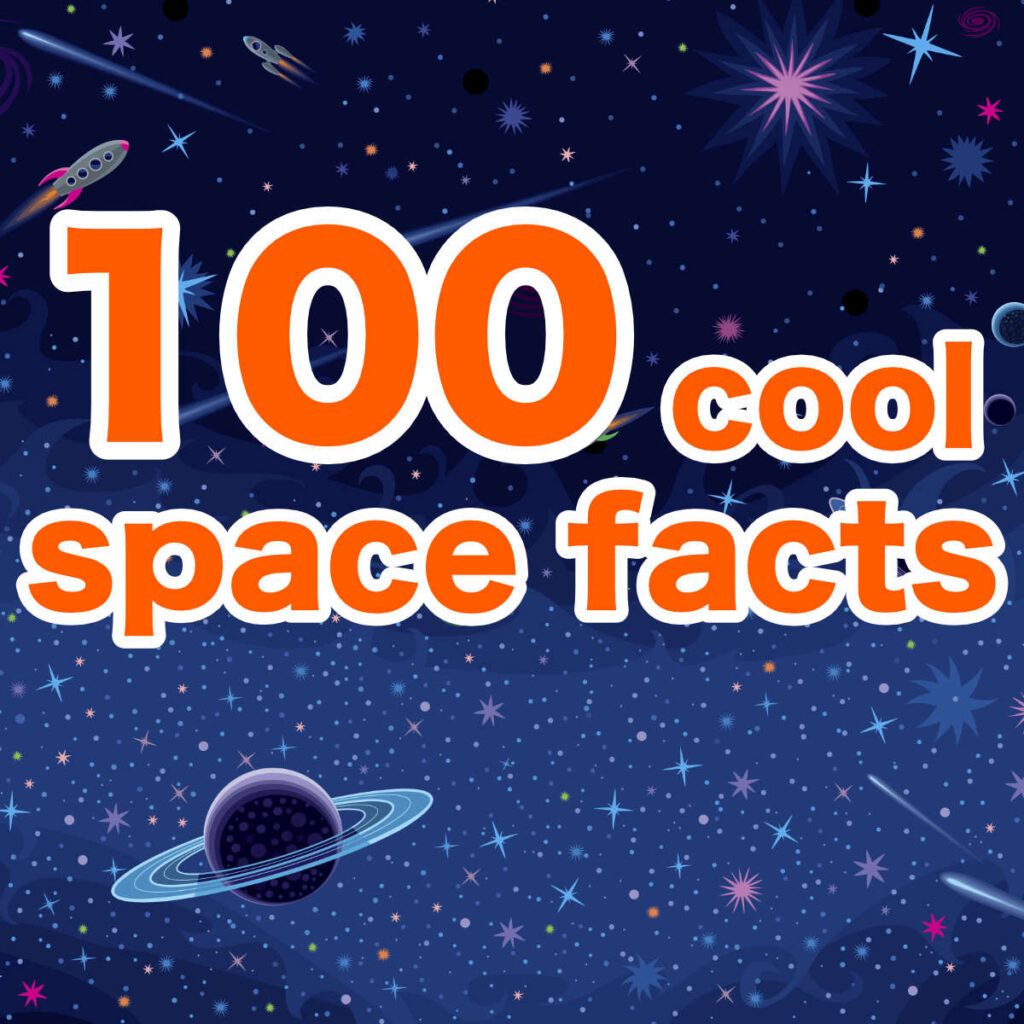
With something as grand and pretty much unknown as space, you should keep in mind that these facts are accurate as far as our current knowledge and understanding of the universe and physics go. With research and better equipment, humanity can always make discoveries that change everything.
1. You could fit all the planets in our Solar System between Earth and the Moon, but not always
We’re kicking off this list of facts about space with a popular one. People often say you can fit all planets between the Moon and the Earth; however, this isn’t always true.
It is sometimes hard to imagine just how long the distances in space are. If you take all the planets in our Solar System, Earth excluded, you could fit them between the Moon and the Earth when these two are farthest apart (known as apogee).
You would struggle when Moon and Earth are closer and would need to rotate the planets a bit to make them fit. When the Moon and Earth are closest together (perigee), you wouldn’t be able to fit them all in.
2. The Sun isn’t the center of Jupiter’s orbit
It’s not as crazy as it may sound. All planets orbit around the Sun, and most have the center of their orbit (barycenter) somewhere inside the Sun.
But when it comes to Jupiter and Sun, the barycenter is slightly outside the Sun. While it is true everything in our Solar System orbits the Sun, things are just a little bit more complex. Planets and the Sun (and any other star stars) orbit around their common center of mass. As Jupiter is so massive, the barycenter of the Sun and Jupiter isn’t inside the Sun but outside. The position of the barycenter changes slightly depending on the positions of other planets.
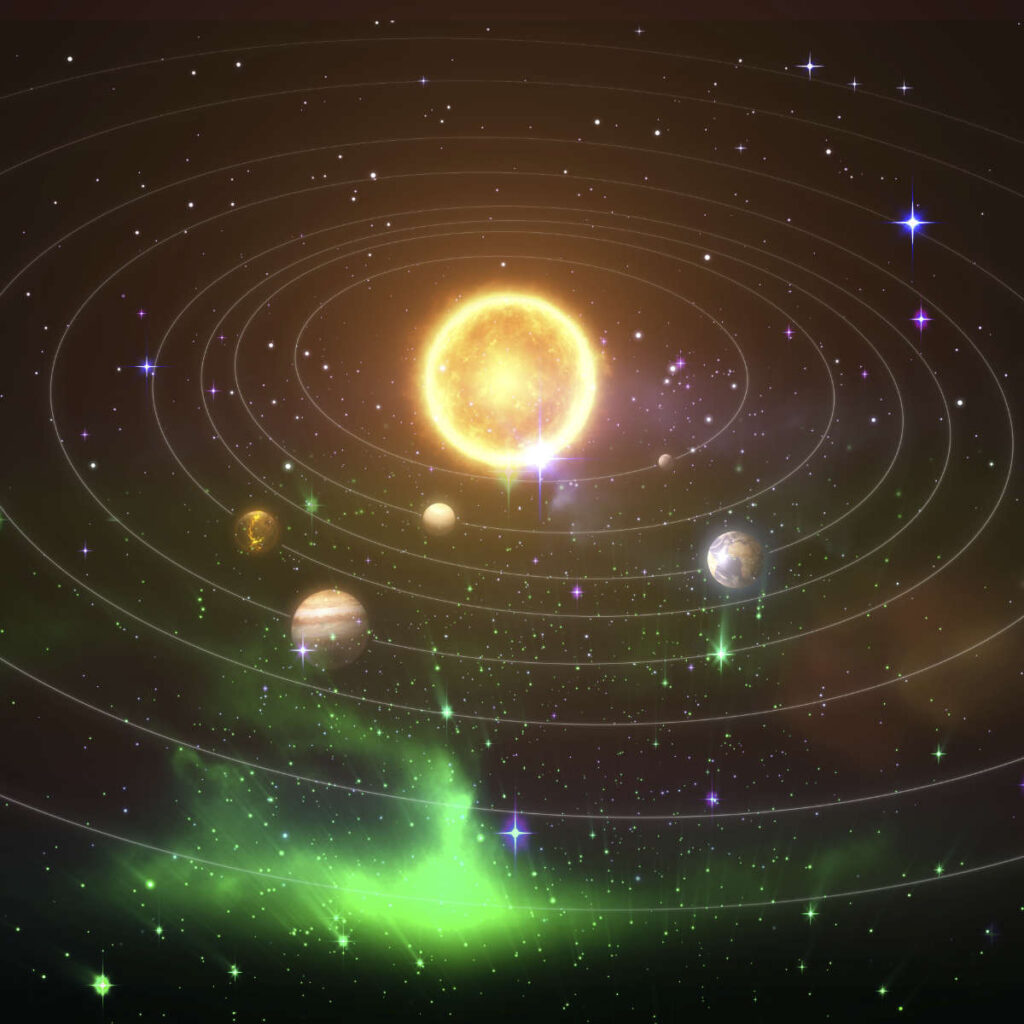
3. The Sun holds about 99.86% of all mass of our Solar System
Talk about massive. The mass of our Solar System includes everything, the planets, the moons, dwarf planets, asteroids, and comets. Every speck of space dust. Out of the roughly 0.14% remaining, most goes to the planets. Jupiter, the largest planet in our Solar System, is 2.5 times more massive than the mass of all other planets combined.
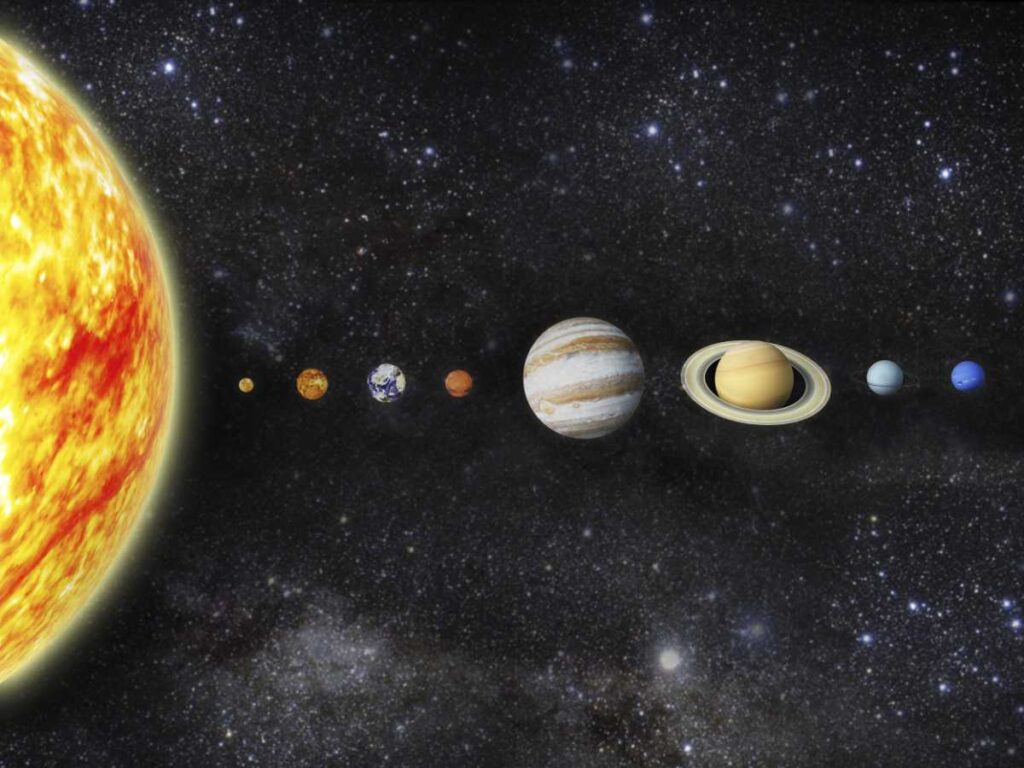
4. If teleportation was possible and you could teleport anywhere in space, you could look at our past
In an imaginary world where instant teleportation is possible and insanely superior telescopes are a thing, you would be able to look into the past.
Let’s say you teleport to a planet one light year away. If you point your telescope at Earth, you would look one year into the past. If you are the distance of one light-year away, the light that leaves the Earth takes one year to reach you.
The further you would travel, the further back into the past you would be able to see (with your super-duper mega magnifying telescope). Travel far enough, and you can even observe the dinosaurs.
5. Some of the stars you see in the sky might not exist anymore
The stars in the sky are anywhere from a few thousand light-years away (with the naked eye) to millions of light-years away (with a telescope). And it takes that amount of time for the light from those stars to reach us. So if a star 10.000 light-years away would explode today, it would take 10.000 for the explosion to be seen from Earth. When you look at the stars in the sky, you look at their past.
6. As far as the position of stars goes, the night sky is basically an illusion
You already know that when you look at the stars, you are looking at how the stars were many years ago. Things get even more interesting here.
When you look at the sky, you see the stars in their positions and their relation to other stars. In reality, the stars were never positioned just as you see them in the sky.
Since it takes different amounts of time for the light from the stars to reach us, you are looking at stars and, more importantly, their positions in the sky, as they were anywhere from thousands to millions or more years ago.
The moment star A was at its place; star B might not be where you see it today, so the sky was never just as you see it.
7. Uranus rotates on its side (compared to other planets)
Looking at the planets from the same point of view (North poles up), you will notice most rotate anti-clockwise. The same applies to most other objects in our Solar System.
But Uranus has a unique rotation. For one, it rotates clockwise, but so does Venus. What makes Uranus even more remarkable is that the planet is tilted to its side, so it rotates sideways. It pretty much rolls around its orbit.

8. There are many multiple star systems
Single star systems are the most common, but there are star systems where planets and other bodies orbit two or more stars. The stars also orbit each other.
When it comes to multiple star systems, binary (2 stars) systems are the most common.
9. There is a black hole at the center of our galaxy
There is a gigantic black hole at the center of the Milky Way. Scientists assume that supermassive black holes are at the center of most if not all galaxies.
The black hole in our galaxy is called Sagittarius A*.

10. It may rain diamonds on Uranus and Neptune
Uranus and Neptune, the outermost planets of our Solar System, are made mostly of water, ammonia, and methane. This is also why these planets are called ice giants rather than gas giants.
With the data collected and mathematical models, researchers concluded it is possible it “rains” diamonds on these two planets. They aren’t exactly raining from the sky as we imagine it as neither Uranus nor Neptune has a solid surface.
The methane breaks down under severe pressures on these planets. As a result, we now have free-flying carbon. Carbon connects with other carbon, and under pressure, the carbon becomes diamond (or very diamond-like). The shiniest of space facts, or is it? Do read on!
11. If you look at the night sky, the stars twinkle, and the planets usually do not
As a rule of thumb, if you want to spot a planet in the sky, look for an object that doesn’t twinkle. This is because planets are closer to Earth than stars are. As they are closer, they appear bigger, and when the light enters our atmosphere, it doesn’t refract in the same way (the twinkling effect is somewhat canceled).
Planets can twinkle when they are low on the horizon, as the light reflected from the planets has to travel through more of the atmosphere before it reaches our eyes.
12. The rings of Saturn are very thin
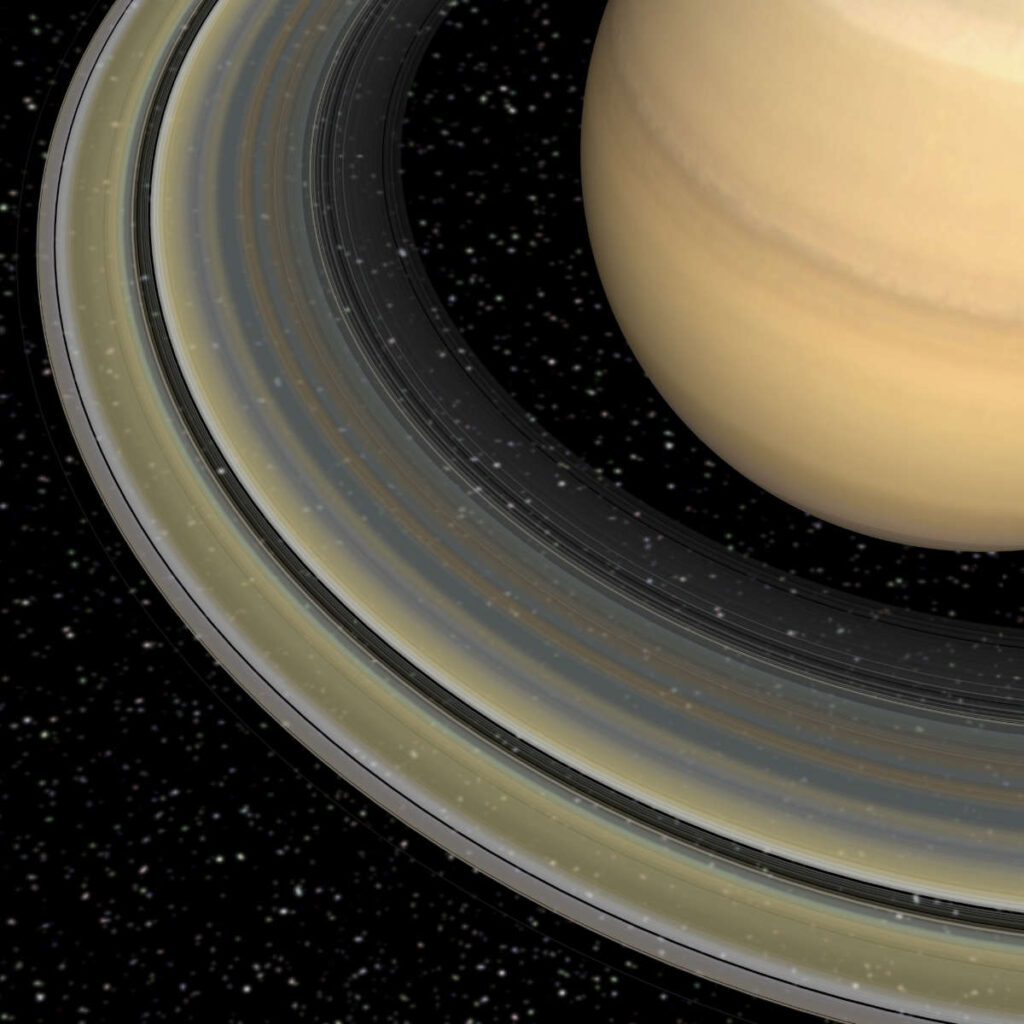
When it comes to our Solar System, Saturn has the most impressive system of rings.
The major rings have a diameter greater than 170.000 miles / 270.000 km, but on average, their width is only a few dozen feet/couple meters. Some parts of the rings are thicker, measuring more than 2 miles / 3 km, but on average, the rings are pretty thin.
13. Dinosaurs lived on the other side of the galaxy
This is one of the most incredible facts about space, especially if you also love dinosaurs.
Everything in space is in motion. All galaxies rotate. Dinosaurs that lived in the early Cretaceous period (the likes of Stegosaurs and Iguanodons) lived on the other side of the galaxy, as Earth at that time was on the other side of our galaxy, the Milky Way (if you compare its position to the position it is at now).
14. Some stars are larger than the orbit of Saturn
You know our Sun is pretty big if you look at the astronomical bodies in our Solar System. But in the grand scheme of things, when it comes to known space, the Sun is just an average-sized star. Many known stars are a lot bigger than our Sun.
One of the biggest stars, Stephenson 2-18, is so big that if you placed it in the center of our Solar System, it would be larger than the orbit of Saturn, the 6th planet in our Solar System.
15. Saturn is less dense than water
That’s right. If you were able to drop it in water, it would float. It is the only planet in our Solar System that is less dense than water.

16. A solar day on Mercury is longer than a Year on Mercury
One solar day on Mercury, sunrise to sunrise is about 176 Earth days. One year on Mercury is 88 days.
17. Polaris wasn’t always the North Star
Polaris is a star, technically a triple star system, nearly directly aligned with Earth’s rotational axis. Because of this, it is almost motionless in the sky and can be used to find the direction of the North.
Earth’s rotational axis wobbles, so Polaris isn’t always aligned with it. Every couple of thousands of years another star, Vega, takes its role as the Northern star as it becomes more aligned with the Earth’s axis. This will happen again in about 12.000 years.
18. We can’t measure the speed of light
When you talk about space, you can’t avoid the speed of light. This may be one of the most surprising facts about space, but we can’t measure the speed of light. Freaky right?
We defined the speed of light (in vacuum) as a constant of 299,792,458 meters per second (186,282 miles per second). This number was derived from many calculations and measurements (assuming light travels at a constant speed in all directions).
One meter was defined by the length of one special platinum rod held in a vault under controlled conditions. But that wasn’t handy, and the definition of meter was changed. The meter is defined as the length of the path traveled by light in a vacuum in 1/299.792.458 of a second.
So when you attempt to measure the speed of light, you are using meters, which are defined by the speed of light. So as the meter is determined by the speed of light, any measurement you would make would show you how accurate your measuring instruments are.
19. Venus is the hottest planet in our Solar System even though it’s not the closest to the Sun
You may think the closer a planet is to the Sun, the hotter its surface would be. This is mostly true but not always. Venus, for example, is further away from the Sun than Mercury is, but it is hotter. The reason for this lies in its atmosphere. The atmosphere of Venus has an extreme greenhouse effect.

Read: Why is Venus hotter than Mercury
20. A full moon always rises on the East
For the moon to be full, it needs to be opposite to the Sun, so it will always rise in the East around sunset.
21. You can see five planets in our Solar System without a telescope
You can observe Mercury, Venus, Mars, Jupiter, and Saturn without a telescope. Now, if you can actually see them all depends on the light pollution of your location.
22. Sun’s corona is hotter than its surface
It may come as a surprise, but the Sun’s corona has a temperature of over a million degrees while the surface of the Sun is only about 9940° F /5500° C.
23. The tallest mountain in our Solar System is on Mars
With its peak at 13.6 miles / 21.9 km, Olympus Mons on Mars is the highest mountain in our Solar System. It is about two and a half times Mount Everest’s height. At the same time, it’s also the highest volcano in our Solar System; however, it is not an active one.
24. The rotation of the Sun varies by longitude
It takes the equator of the Sun about 26 days to make a full rotation. The closer to the poles you get, the longer it takes the Sun to complete the rotation. Near the poles, one full rotation takes about 36 Earth days.
25. Surface area of Pluto is similar to the surface area of Russia
Dwarf planet Pluto has a surface area about the same size as the surface area of Russia.
26. Most planets and moons in our solar system rotate in the same direction
Most, but not all, of these astronomical objects in our Solar System rotate anti-clockwise on their axis. The Sun also rotates anti-clockwise.
This is due to the initial conditions from when the Solar System formed. Planets and moons which rotate in another direction do so because of various events (impacts, etc.) that changed the direction of their rotation.
27. Jupiter has a similar composition as the Sun
This gigantic planet is sometimes nicknamed the “failed star.” While this isn’t exactly true, this planed does have something in common with the stars, its composition. Just like the Sun, Jupiter is mainly composed of hydrogen and helium.

28. You may be sitting still, but you are also moving with an unimaginable speed through space
You are sitting still. But are you? The Earth rotates; the speed at which you move “around the globe” depends on where you are; you move faster at the equator than at the poles. Let’s go with the top speed – if you live at the equator, the speed is about 1047 mph / 1670 km/h.
At the same time, we’re also orbiting the Sun. It takes a year to complete one orbit, and Earth does it at a speed of about 67,000 mph / 107,000 km/h. Things are already getting crazy fast.
Our solar system rotates around the center of our galaxy. The speed has been calculated to be 448,000 mph / 720,000 km/h. Mind-blowing. But we’re still not finished.
Milky Way, our Galaxy, moves as well, relative to other galaxies.
So while you read this fact, you traveled thousands of miles/kilometers in space.
29. Distances between asteroids in the asteroid belt are wast
If you watch a sci-fi movie in space, chances are it will feature a scene where a spaceship has to fly through a dangerous asteroid field packed with space rocks that are hard to navigate past.
If the movie took place in our Solar System, the pilot wouldn’t have any issues flying through the field as the average distance between two asteroids in the belt is 600,000 miles / 966,000 km. Movie makers should get their space facts straight, though the movies might be duller.
30. There is matter in the vacuum in space
A vacuum is defined as a space entirely devoid of matter. A perfect vacuum isn’t possible, as some types of particles will always be present.
Outer space is the closest to a perfect vacuum; however, you would still find a couple of hydrogen atoms per cubic meter of space.
31. You can watch the Big Bang, kind of
Grab an old analog TV, turn it on and watch the static noise. The static noise you see (the specks of white, gray, and black) is caused by random radio waves your TV picks up, both from artificial and natural sources, including radio waves from space. About 1% of the static you see is caused by cosmic microwave background radiation, electromagnetic radiation, which is a remnant from the early stages of the universe.

32. The Big Bang Theory is the most accepted one but not the only theory of how the universe started
The Big Bang theory is the most commonly accepted theory of how our universe started, but it is not the only one.
Some of them are;
- The eternal universe – a universe with no start, always being more or less as it is today
- Steady-state – the universe is constantly expanding with new matter self appearing
- The black hole theory – our universe was created from a black hole in another universe, meaning we live outside of its event horizon, and another (and another, and another) universe exists outside the black hole we are in
33. As far as human hearing goes, space is silent
Everything makes noises, but sound can’t travel through space, so this is why we perceive space as being silent.
34. Spaghettification is a scientific term for an event that can happen in space
When it comes to terminology in astrophysics, spaghettification (also known as the noodle effect) has to be the most fantastic word. Spaghettification is the vertical stretching and horizontal compression (becoming spaghetti) of objects in very strong gravitational fields.
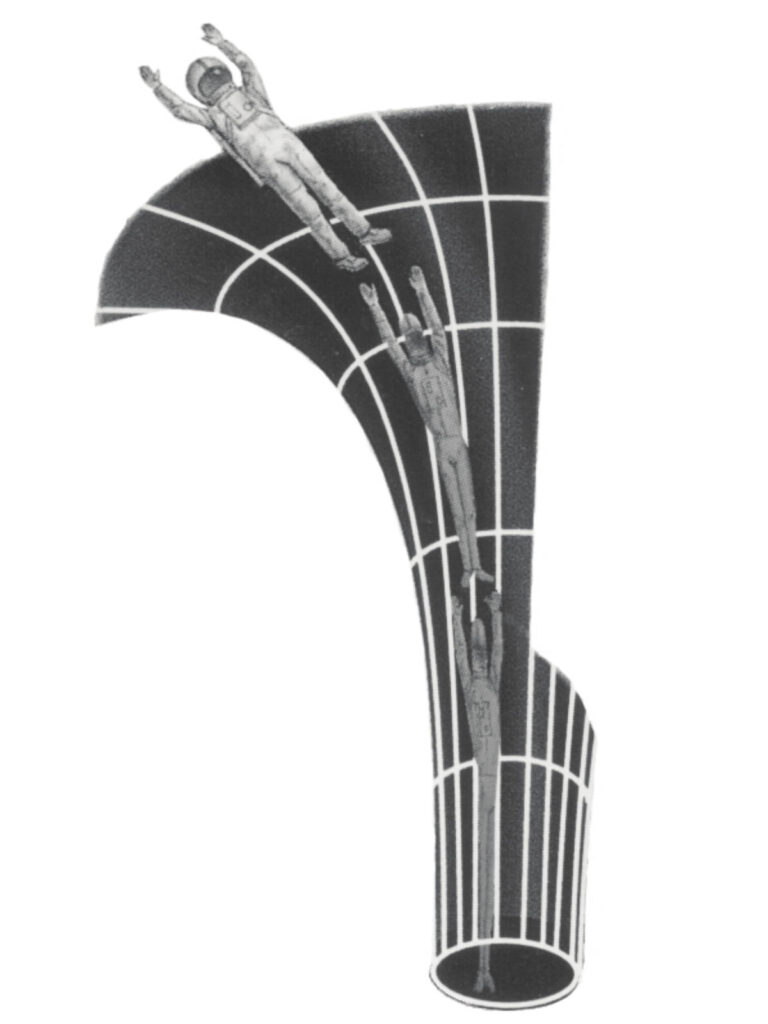
35. We’re polluting the Earth’s orbit
We’re battling pollution on our planet, and we have to fight it in orbit as well. Over time, we accumulated quite a bit of human-made space debris in our orbit. There is enough trash in space that it’s already becoming problematic. They mostly pose a danger to satellites and spacecrafts. Still, They can sometimes (rarely) cause damage on Earth when larger debris re-enters the Earth’s atmosphere and reach the ground.
This is not one of the facts about space we can be proud of.
34. Our Solar System is the only Solar System in space
Now, this is one of the linguistic facts about space. The Solar system is a star system with planets gravitationally bound to the Sun. Solar System is the name of our star system. It is the only star system officially named the Solar System.
35. The highest temperature measured on Earth was hotter than the Sun’s core
CERN’s Large Hadron Collider, Geneva, Switzerland, announced that they had achieved temperatures of over 5 trillion kelvins in 2012. The temperature of the Sun’s core is “only” 15 million kelvins.
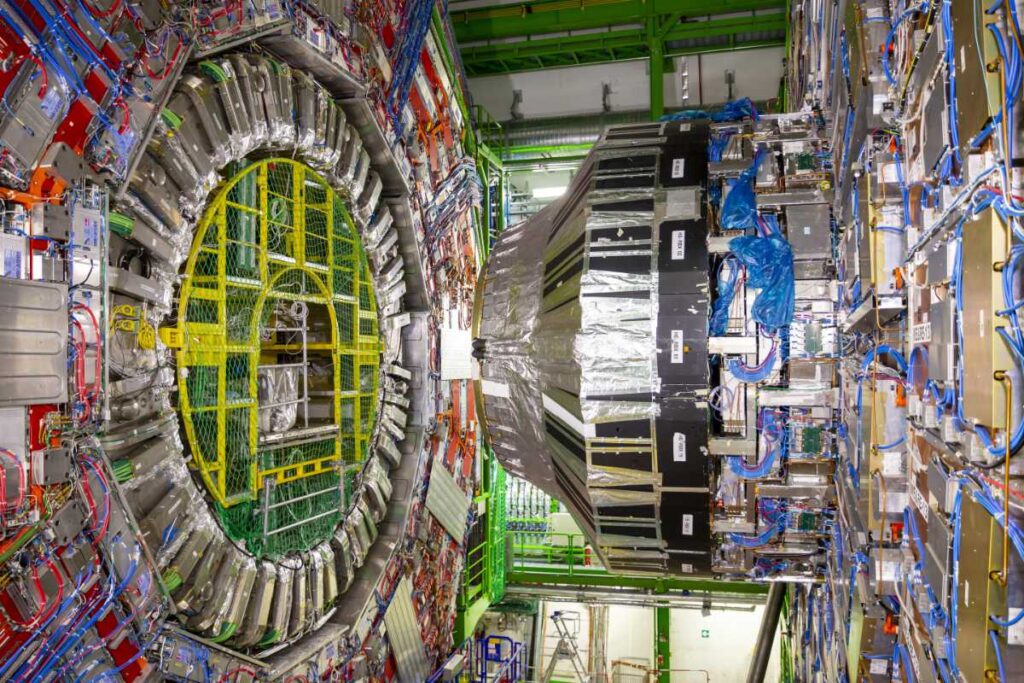
36. Earth sometimes has more than one moon
Sometimes small natural objects in orbit around the Sun enter orbit around Earth for a short time. They essentially become temporary natural satellites.
Kamoʻoalewa, an asteroid, is one of the most stable quasi satellites. It orbits the Sun but appears to be (currently) orbiting the Earth as well. It will leave orbit at one time (300 years or so).
37. The closer the planet is to the Sun, the faster it moves
When a planet is closer to the Sun, the Sun’s gravitational pull is stronger, so the planet moves faster. This is described by the second Kepler’s law of planetary motion.
38. Planet J1407b has rings about 640 times greater than those of Saturn
If you think Saturn’s rings are impressive, your mind will be blown by the fact that the planet J1407b has a ring system about 640 times greater than the rings of Saturn. There are a ton of planets with more impressive ring systems than those of Saturn.
39. Planet Cancri is believed to be covered with diamonds
There are many hidden gems in the universe, one of them being the planet Cancri, that could very well be covered with diamonds.
A third of the planet’s mass may be carbon, with much of that carbon being in the form of diamonds.
40. Retrograde orbits of planets in our Solar System are an optical illusion
Retrograde motion is when an object moves or rotates in the opposite direction than its primary body – the Sun in our Solar System.
Sometimes planets may appear to change their course and orbit in the opposite direction, but this is just an illusion. It’s our perception that changes (from our viewpoint) and not the orbit of the planets.
41. A planet can turn into a star, in theory
Many conditions would have to be met for this to happen, don’t worry, this can’t happen in our Solar System.
There are a couple of theories about how this could happen, one being that it is possible for a planet with a similar constitution as Jupiter, but with far greater mass, could support a fusion chain reaction if enough energy could be delivered to ignite it.
If the chemical constitution is just right, in theory, a collision of a giant asteroid with the planet could ignite the thermonuclear reaction and transform it into a star.
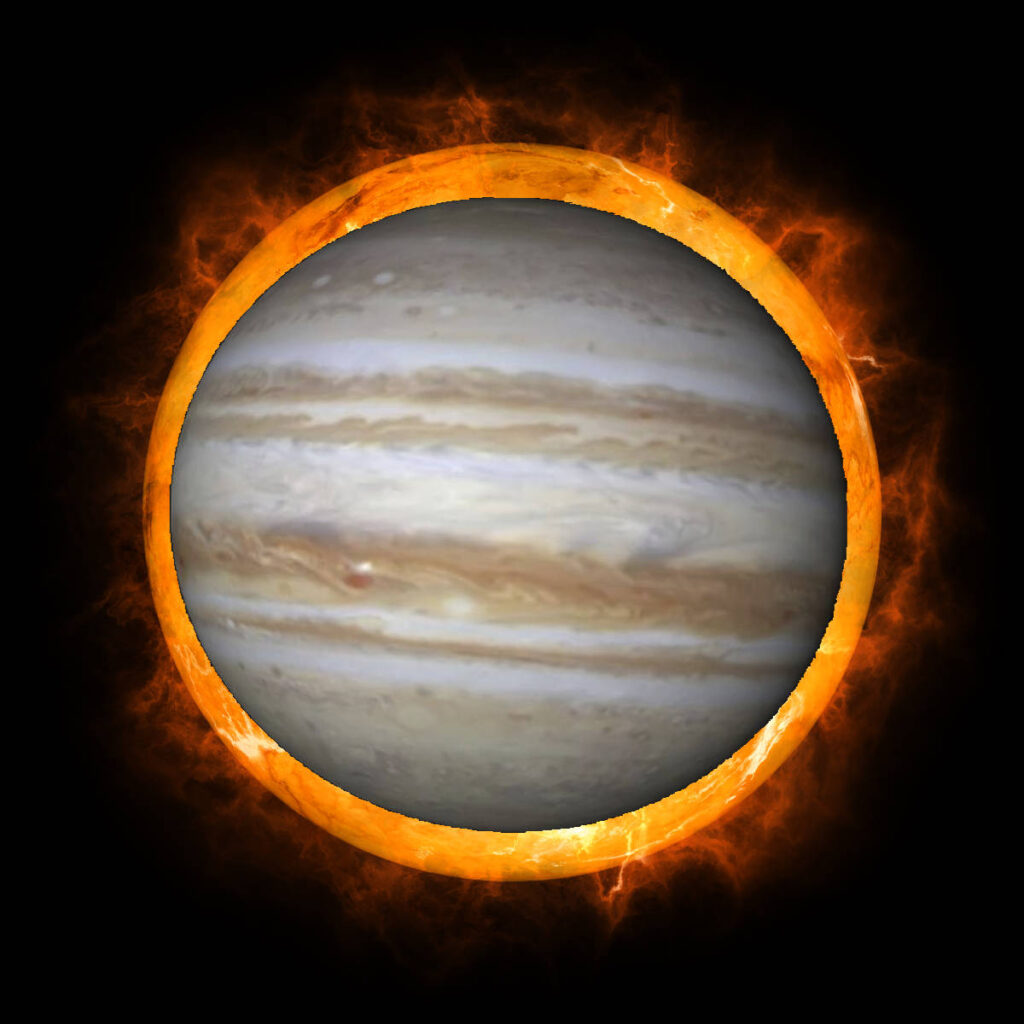
Also read: Could Jupiter become a star?
42. Some moons are larger than some planets
And that is true even in our Solar System. The moons Ganymede and Titan are both larger than Mercury.

43. Asteroids can have moons too
Some of the largest asteroids in our Solar System have their moons.
44. Moons don’t have moons in our Solar System
Most planets in our Solar System have moons; most have more than one. Even asteroids can have moons. But no moon has been found that would have its moon.
We do have a name ready for them, though, subsatellite is a hypothetical moon of a moon. Submoon or, even better, moonmoon are alternative names.
45. We may be able to grow potatoes on Mars
Yup! An experiment was done, with Mars-like soil, to see if plants would grow on Mars. The conditions were made to mimic the atmosphere as well, as closely as possible. With care – watering and fertilizing, the potatoes sprouted. They did take their time, though.
If grown on Mars, the plants would still need to be protected from the harsh environmental changes and cosmic radiation. Still, it’s nice to know growing them isn’t impossible.
46. Jupiter has the shortest day in our Solar System
This planet spins around its axis once about every 9 hours, 55 minutes, and 30 seconds.
47. Ironically, Uranus might smell like farts
This has to be one of the most fun facts about space. As if having your name used in countless jokes and puns isn’t enough. The clouds on Uranus are composed of hydrogen sulfide, a compound that gives the farts and rotten eggs their distinctive smell.
48. Many people claimed to own the Moon
And we’re not talking about patches of land commonly sold by some companies (these have no legal grounds, and you won’t actually own land on the Moon if you buy it, by the way – it is still a fun gift, though).
There were multiple claims throughout history, with the Jürgens family (in Germany) possibly having the oldest claim. They claim the Moon has been family property since 1756 when the emperor of Prussia awarded it to them.
49. Humankind sent many animals to space
We sent quite a few animals into space, some more ethically than others.
The most known animal flown into space was the dog named Laika. Some other animals that have been launched into space include space, including monkeys and apes, dogs, cats, rats, tortoises, mice, fish, frogs, rabbits, spiders, and some other insects.
50. There are stars out there smaller than Jupiter
There are a few known and probably many unknown red dwarf stars that are smaller than Jupiter. Many other types of stars are smaller as well. And we’re halfway through our list of facts about space.
51. Moon has moonquakes, stars have starquakes
Events like earthquakes aren’t unique to our planet. But you can’t exactly call them earthquakes if they happen anywhere else than on Earth. Quakes on other planets have their own name. A quake on Venus is a venusquake. The mechanics of them can be different than those of Earth as well.
52. Without the atmosphere, we would see the Sun as white
We perceive the Sun as yellowish or orange-red, depending on the time of the day and atmospheric conditions. But if you would remove the atmosphere, which scatters the light, the Sun would be seen as white.
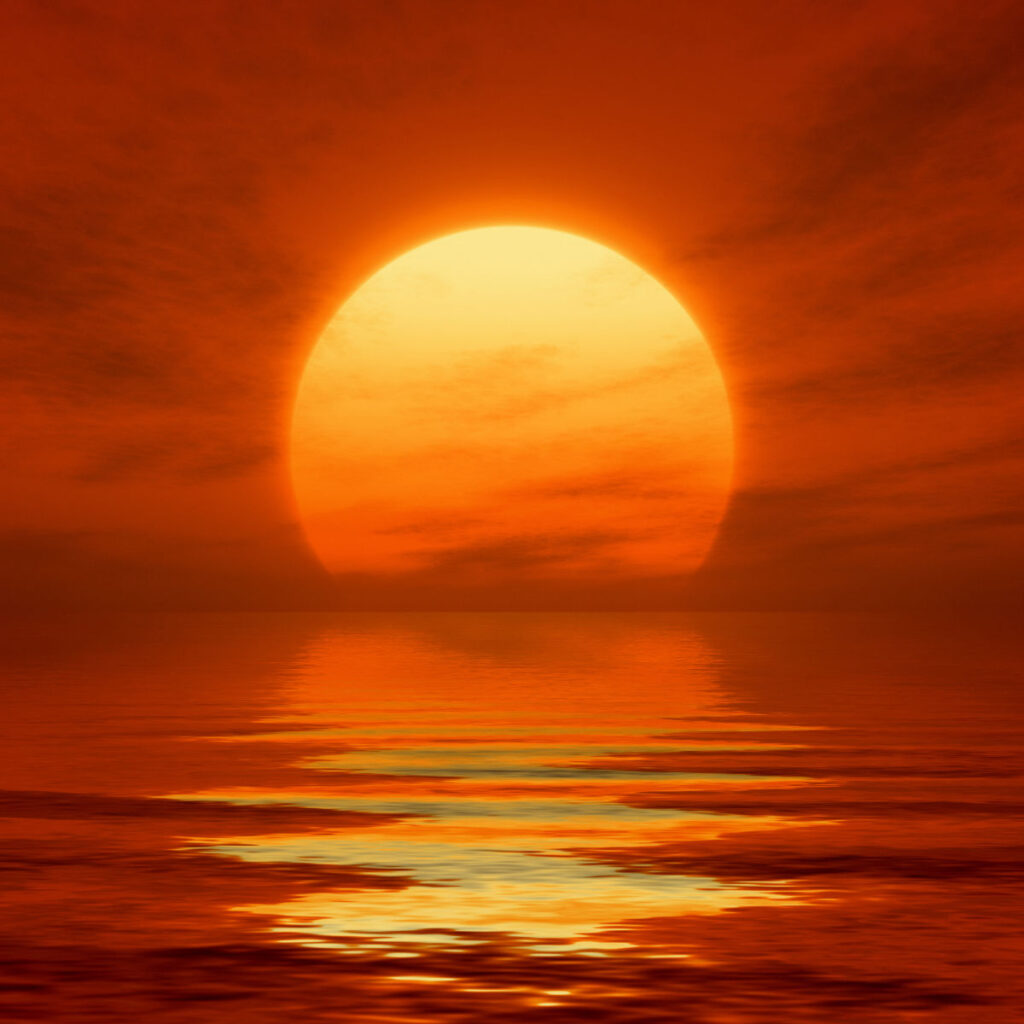
Also read: Why is Sun red at sunset?
53. Nu Scorpii and Ar Cassiopeiae are star systems with 7 stars
There are many multiple star systems. While binary star systems are most common when it comes to multiple star systems, there can be quite a few more stars in a single system.
Gamma Cassiopeiae could even be a star system with 8 stars (unconfirmed as of 2022).
54. Curiosity, a robot on Mars, sang itself happy birthday once
In 2013, to celebrate its first successful year of exploration on Mars, the robot was programmed to play a tune. Pretty neat, although this one can probably go down as the loneliest birthday party of all times.
55. Morning Star is Venus (and so is the Evening Star)
What we know as the Morning Star and the Evening Star are the same astronomical body, and more importantly, not a star. The first and last shining object that appears in the sky is the planet Venus.
56. Alpha Centaury is the nearest star system to Earth
Alpha centaury is the closest star system to Earth. It’s a triple-star system, with Centauri C (Proxima Centauri) being the closest of the 3 stars.
57. The current north star, Polaris, is a group of stars
What we perceive as a single star, Polaris, is a triple star system. The Polaris Aa is the brightest, it has a smaller companion Polaris Ab, and there is also the Polaris B star.
58. A comet’s tail can be in front of a comet
The tail of a comet isn’t always behind the comet. The tail of a comet will always point away from the Sun, so it can be in front of the comet as well.

59. Stable orbits of planets are all ellipses
When a planet has a stable orbit, it’s a near-circle ellipse.
60. There are anywhere between 200-400 billion stars in our galaxy
And there are multiple times more galaxies out there than there are stars in our galaxy. Now, if these numbers aren’t mind-blowing, we don’t know what is.
61. Saturn won’t always have rings
The rings of Saturn are vanishing, but they won’t completely disappear for a very long time.
The planet is slowly but steadily pulling particles from the rings and eating them up. It will take hundreds of millions of years before Saturn manages to snatch them all up.

62. Canis Majoris is one of the largest stars in our galaxy but not the largest
Canis Majoris is one of the more known stars and held the “largest known star” title for a very long time. It is because of this that many people still name it when they are asked what the largest known star is.
UY Scuti appears to be larger (based on our current knowledge and measurements).
63. Ceres was a planet, then an asteroid and is now a dwarf planet
When discovered, Ceres was first classified as a planet. It was reclassified as an asteroid and was considered as such for many years. But this astronomical body is much larger than other asteroids and quite different from them as well (it’s nicely round, for example), which led the scientist to classify it as a dwarf planet. Some astronomers regard it as both an asteroid and a dwarf planet.
When it comes to the mass of the whole asteroid belt, Ceres takes up 25% of it all.
64. If you swapped our Sun with a black hole of the same mass, nothing would change
Well, except for no more life due to the lack of light. But as far as astronomical bodies in our solar system go, nothing would change. The gravitational pull of the black hole with the mass of the Sun would be the same as the Sun’s.
65. At the end of its life cycle, a star will either become a black hole, a white dwarf, or a neutron star
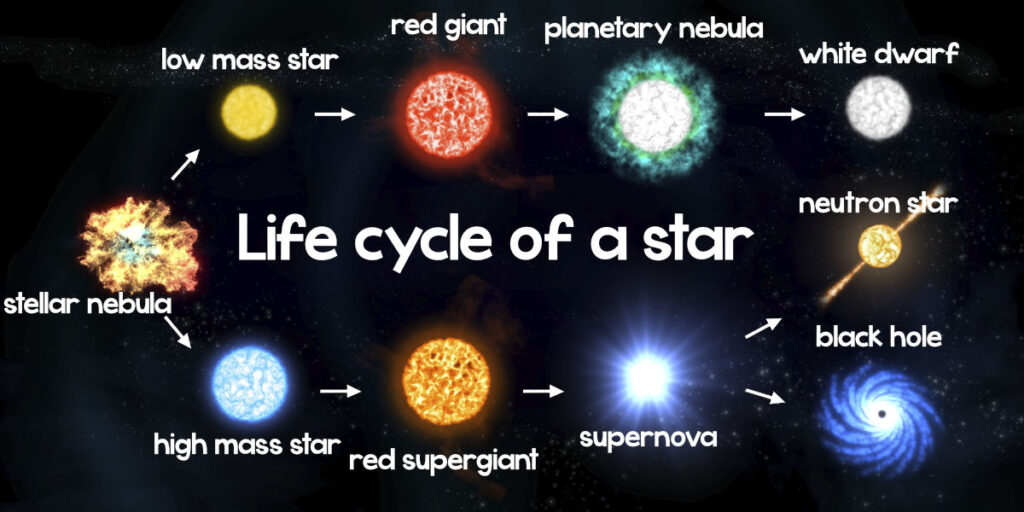
This all depends on the size of the star in its early stages. Our Sun is a low-mass star, so it will end its cycle by becoming a white dwarf.
66. The surface of Mars is rusting
If you are wondering what gives Mars its signature reddish color – it’s rusting. Mars is full of rust. It has a high concentration of iron in the soil and just enough water and oxygen in the atmosphere for rusting.
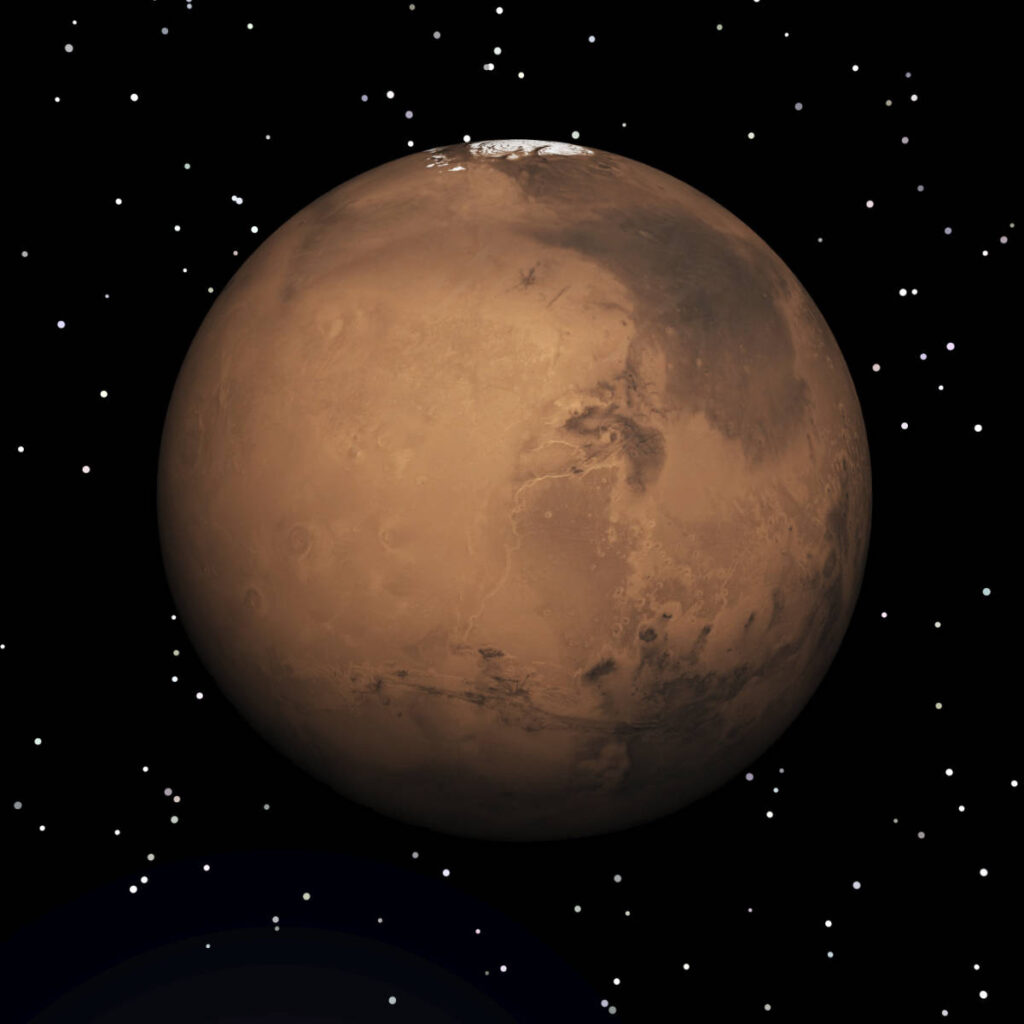
Also read: Why is Mars red?
67. There could be such a thing as a Zombie star (hypothetically)
Zombie stars could hypothetically form when a Type of lax supernova leaves behind a remnant star. Usually, no stars should be left behind, and the stellar mass should be completely dispersed.
68. In theory, life is possible on all terrestrial planets in our Solar System but very, very unlikely
Besides Earth, life is possible on Mercury, Venus, and Mars. Water in icy deposits was observed on these planets, so bacterial life is possible. However, very unlikely (more unlikely on some planets than others).
69. A single sunspot on the Sun can be bigger than Earth is
Sunspots are interesting phenomena. They appear as areas on the Sun’s surface that are temporarily darker than surrounding areas. These regions have a lower temperature, which can persist from days to months. On average, they are the size of our planet, but they can be a whole lot larger too. One of the largest sunspots ever recorded was about the size of Jupiter.
70. Magnetars have the strongest magnetic field in the known universe
Magnetars are amazing types of neutron stars that have extremely powerful magnetic fields. They are the largest and most powerful magnets in the known universe.
71. There are 4 main types of galaxies
Galaxies come in many shapes and sizes. There are 4 main types of galaxies;
- Spiral
- Elliptical
- Peculiar
- Irregular
Our galaxy, the Milky Way, is a spiral galaxy, and Andromeda, our closest galaxy, is a spiral one as well.
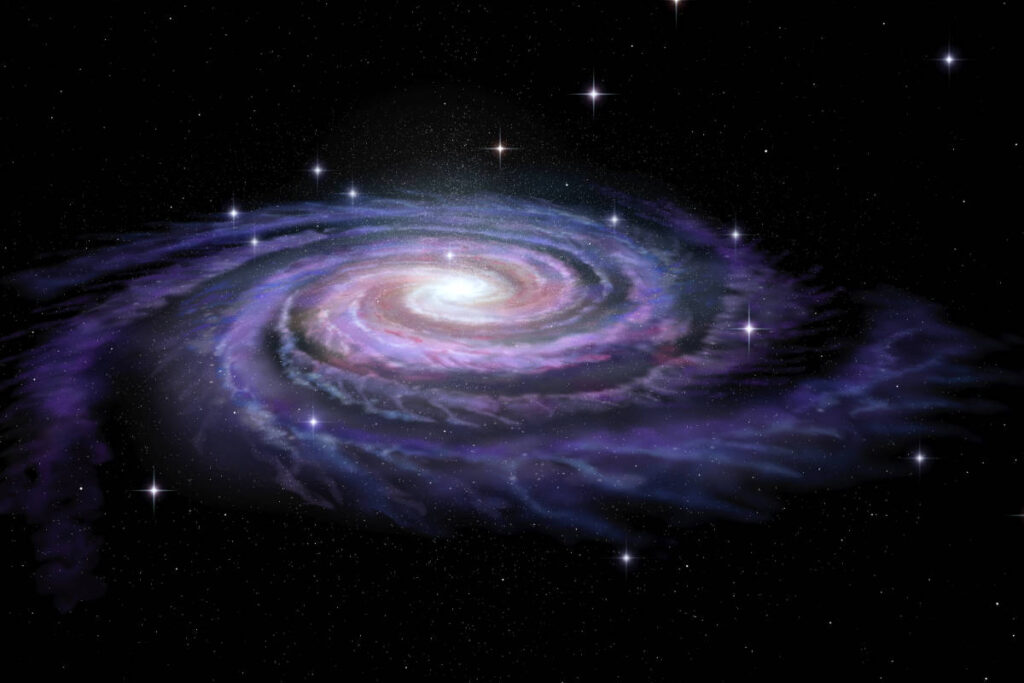
72. The mass of all asteroids in the asteroid belt combined is likely less than the mass of the Moon
This makes sense considering how apart asteroids are on to another. Ceres, which takes up about a quarter of the mass of the asteroid belt, is also just about a quarter of the size of the Moon.
73. The moon is moving away from Earth
Yup, it’s running away. It’s moving away at a current rate of about 1.5 inches / 4 cm per year. What’s more bizarre is that the reason the Moon is moving away lies within the Moon, so it’s pushing itself away. But it will never completely leave the Earth’s orbit unless it would be hit by an asteroid big enough to break out of orbit.
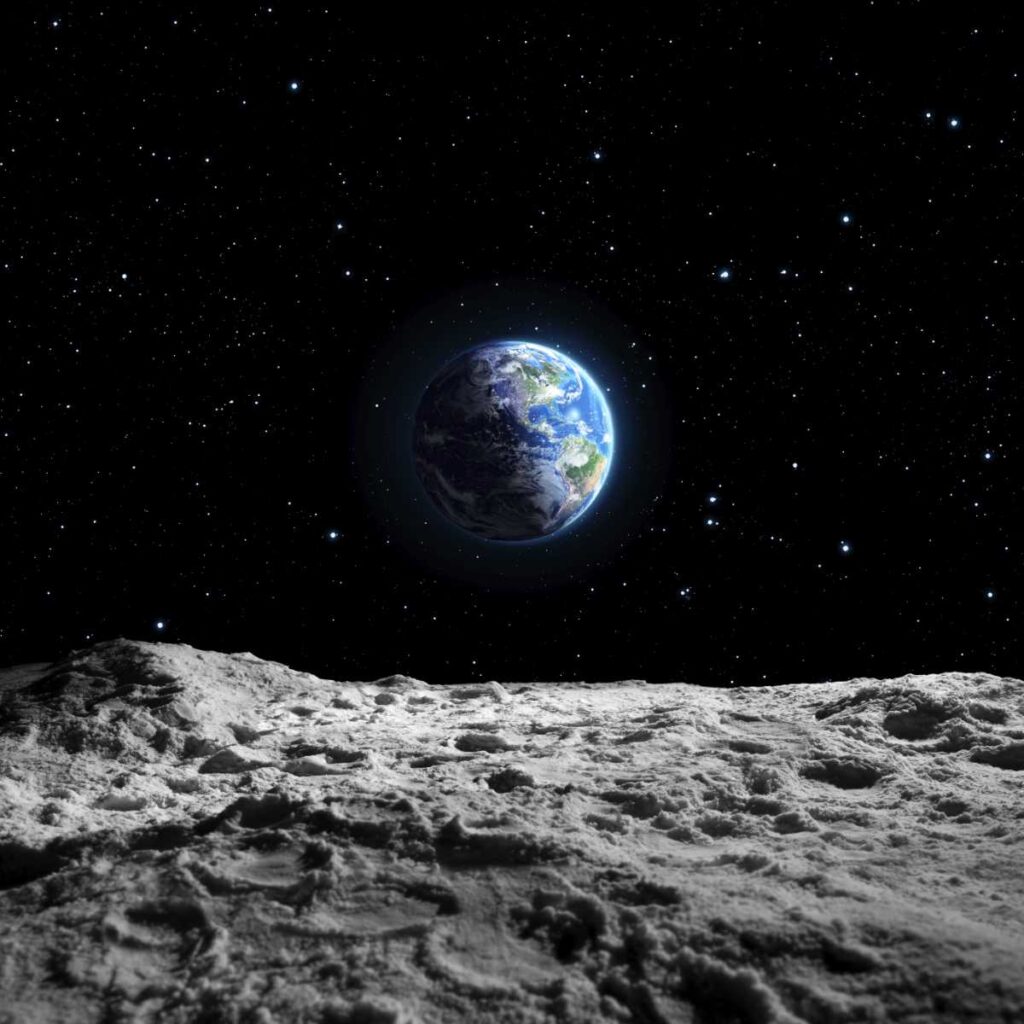
74. And the Earth is moving away from the center of the Sun
The Sun is continuously losing mass; the mass loss is neglectable both from the view of a human’s lifespan and even from the lifespan of the Sun. But it is happening. And gravity depends on the object’s mass; less mass means less gravitational pull.
So if we’re looking at the center of the Sun, the Earth is moving away. The distance is negligible when it comes to the proportions of the universe, though. Still pretty cool as far as space facts go, right?
75. The first human in space was Yuri Gagarin
A Soviet cosmonaut Yuri Alekseyevich Gagarin was the first human to journey into outer space. On 12th April 1961, he completed one orbit of the Earth in the Vostok 1 capsule. This was a significant milestone for space exploration.

76. The space is either finite or infinite
This is one of the craziest facts about space if you think about it. We don’t know which one of these options is true, but one of them is. Whichever one is true is both fascinating and incomprehensible and only opens up a million other questions.
77. Rainbows are unique to Earth as far as our Solar System goes
You need a set of special conditions to get a rainbow, and no other planet in our Solar System has what it takes. In very short, you need sunshine and rainwater.
Glory, an optical phenomenon resembling a rainbow but caused by a different physical process, was spotted on Venus.
78. Lightning isn’t unique to Earth
Lightning, another remarkable natural phenomenon, isn’t unique to Earth. Spectacular flashes of lightning occur in space and on other planets. A spacecraft observed and confirmed them even on distant planets such as Jupiter, Saturn, and Uranus. Pretty cool, right?
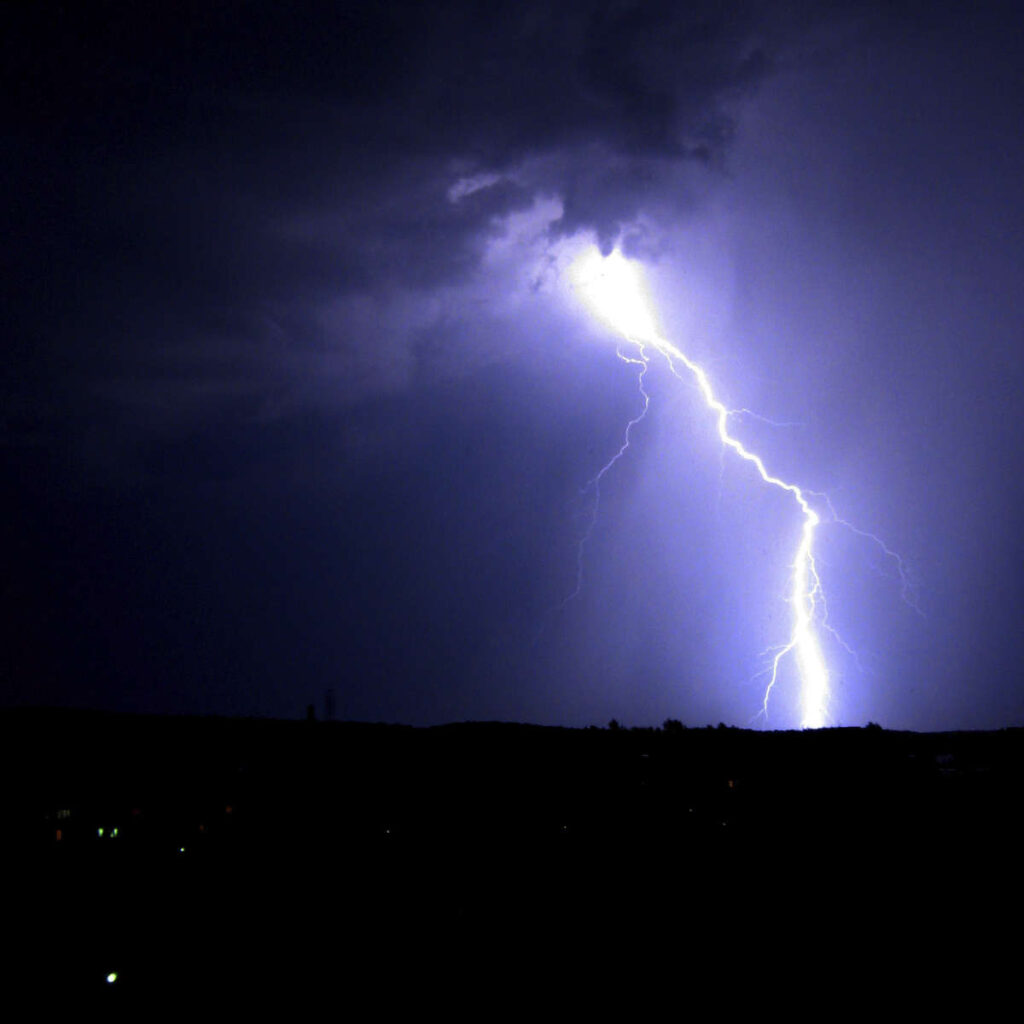
79. Our galaxy is on a collision course with the Andromeda galaxy
Uh oh? Well, it’s not as bad as it may seem. This won’t be some instantaneous crash of galactic proportions. Most likely, the collision of galaxies will be a slow process spanning billions of years – in this time, the galaxies will merge, forming an even bigger galaxy.
80. Earth completes one rotation in 23h 56 minutes and 4(ish) seconds
This is one of the facts about space and our planet that surprises many. It takes Earth just over 23 hours and 56 minutes to complete one full rotation on its axis. This is known as a sidereal day.
But it takes Earth 24 hours to complete one solar day. A solar day is the amount of time needed for Earth (or other planets) to complete a rotation in a way that the Sun appears at the same position in the sky.
81. Pluto was the 9th planet in our Solar System until 2006
At its “peak,” our Solar System had 9 planets. The ninth planet was the planet Pluto which was discovered back in 1930. Pluto existed as a full-blown planet for over 70 years. Still, on August 24th, 2006, Pluto was stripped of its full-fledged planetary glory and was demoted to a dwarf planet. A sad day for Pluto.
82. The average color of the universe is Cosmic Latte
One of the fanciest facts about space, right? A team of astronomers from Johns Hopkins University determined the average color of the universe, and it was a slightly beige-ish white. A search for the color name began as you can’t really call something as unique as space beige. Several cool suggestions were considered, from Cappuccino Cosmo, Cosmic Khaki, Cosmic Cream, etc. It was decided that this particular shade of beige would be named Cosmic Latte.
83. Comets have a highly elliptical orbit
Planets have slightly elliptical, almost perfect circle-like orbits; however, comets have a highly elliptical ones.
84. Comets follow Keppler’s law, the closer they are to the Sun, the faster they are
When it comes to planets, Keppler’s law is pretty dull. Mercury is closest to the Sun, so it moves around the Sun with the highest speed of all planets. The further the planet is, the slower it moves. And the speed of planets is more or less constant.
On the other hand, the comet’s distance from the Sun changes drastically in its orbit, and so does its speed.
85. The night sky only appears to be black
You already know the average color of space is Cosmic latte, but why do we then perceive the space as black. Well, it’s because there is little matter in space to scatter the light to our eyes, which is why it appears black to us.
86. You can only see about 2000 stars without a telescope
Considering there are billions upon billions of stars out there, this number is pretty much peanuts. And to see these couple of thousand stars, you would need to observe them from a very dark location and with no Moon in sight. And the rest depends on your eyesight.
87. We sent music in space
The Voyager golden records are two phonographs included aboard the Voyager spacecrafts. These two spacecrafts were launched into space back in 1977. There are multiple images, recordings, and greetings on these phonographs, showing the diversity of Earth. Many musical works were also included.
88. Comets lose their tail when they are far from the Sun
One of the most notable features of comets is their tail. However, comets only have a tail when they are near the Sun.
89. Water bears can survive extended periods in the vacuum of space
Tardigrades or, as they are more commonly known, water bears have so,e amazing abilities. They can live in some of the harshest environments on Earth and as it tunes out in outer space too.

Think this is cool? You’ll love reading our list of weirdest animal facts.
90. You could fit about 1 million Earths inside the Sun
If the Sun were hollow, you could fit about a million Earths inside it.
91. You could fit 5 billion Suns into UY Scuti
Our Sun is just an average-sized star. You could fit about 5 billion Suns into UY Scuti, one of the largest known stars.
92. There are 4 types of black holes
Black holes are regions in spacetime where the gravity is so extreme that nothing can escape it, not even light.
Currently, there are 4 types of black holes;
- Stellar
- Intermediate
- Supermassive
- Miniature
93. Wormholes may exist
One of the most popular phenomena in science fiction, the wormhole, may actually exist. They are consistent with the general theory of relativity, so they are theoretically possible. We haven’t yet observed one.
94. Life on Earth could originate from space
The cosmozoic theory (panspermia) suggests that life on Earth originated from space. At first glance, it might sound a bit sketchy, but it’s a plausible theory (just think about tardigrades). The theory is that life on Earth was brought on by meteorites, comets, or an asteroid, with the life transferred being super resistant spores or some other primitive yet resilient organisms.
What gives more weight to this theory is that organic matter (not live one) was found on the surface of an asteroid from the inner Solar System. So it’s not an impossible one. But the only thing this theory brings to the table is the answer to how life could have started on Earth, but it doesn’t answer how life began.
95. We are living in the Goldilocks zone
The habitable part of star systems, at least by our standards, is called the Goldilocks zone. Scientists focus more on the planets discovered in the Goldilocks zones as if there is life out there, the most probable place to find it is inside these zones.
96. There is a car in the space
This one can be classified as one of the most bizarre facts about space. There is a car in the space. Elon Musk’s Tesla Roadster was launched into space as a dummy payload in 2018, and it is in orbit of the Sun. What’s more, there is a dummy mannequin sitting behind the wheel.
97. Temperature produced by a lightning strike can be ten times higher than that of the Sun’s surface
It’s almost hard to imagine that something naturally occurring on Earth could be hotter than the Sun’s surface. Lightning can heat the air around it to temperatures ten times higher than the Sun’s surface.
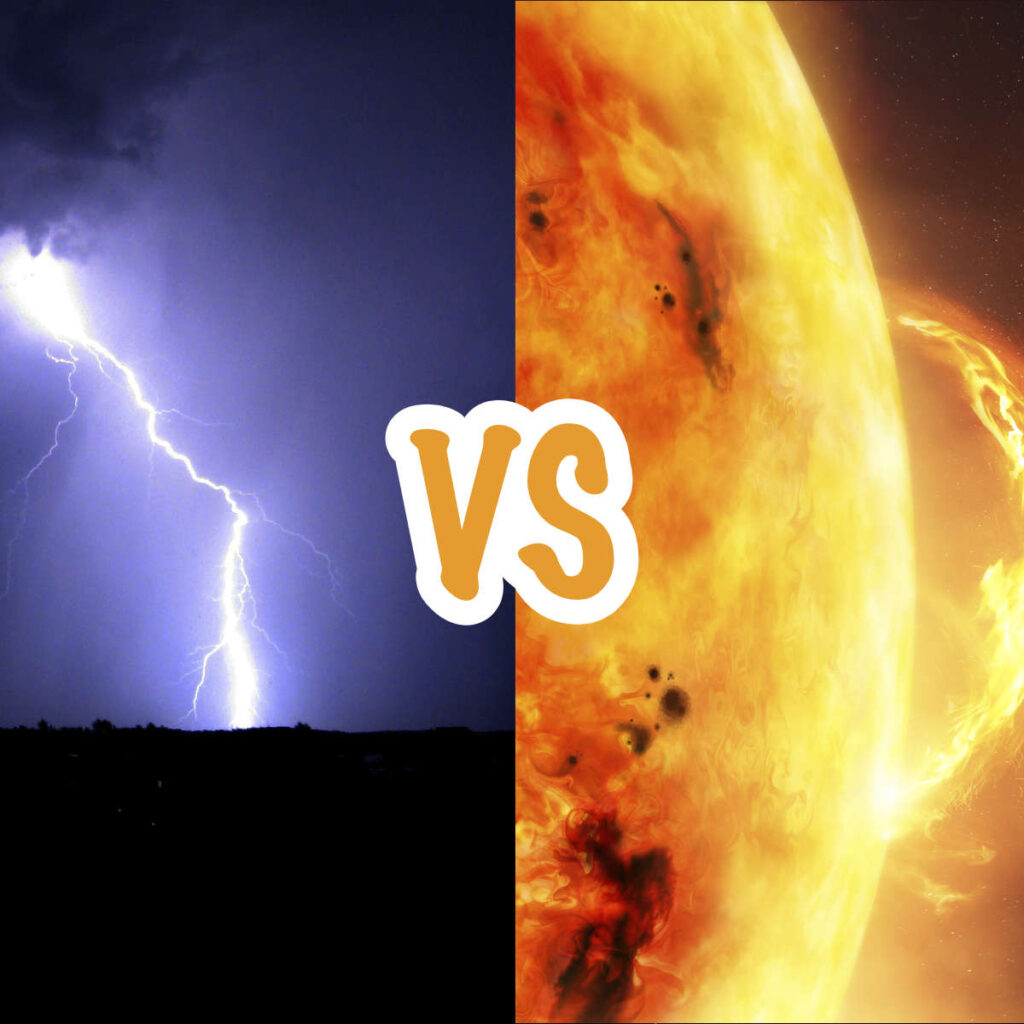
98. Nothing moves faster than the speed of light, but the universe is expanding faster than the speed of light
With the knowledge we now possess, nothing can move faster than the speed of light, right? But the universe appears to be expanding at a speed faster than the speed of light. Now how does that work? It’s pretty mindblowing and hard to explain in short – so do give this excellent article a read.
99. If you would fart in space, no one would hear you
Another fun one on this space facts list. No matter how loud your fart would be, no one would hear it in space. Sound needs a medium to travel, be it solid, gas or water, and since there is practically no matter in space, it can’t travel through
100. We can’t see The Great Attractor
We’re concluding this list of facts about space with the Great Attractor. There are still many mysteries in space, but one of the biggest ones is the Great Attractor. The Great Attractor is a central gravitational anomaly and is the gravitational point of the Laniakea Supercluster, the cluster of about 100.000 galaxies, including our Milky Way. We are aware of its existence and can observe its effect of it on galaxies. However, the Great Attractor itself is obscured by our galaxy. Our galaxy is blocking the view; we would need to be on the other end to see it.
